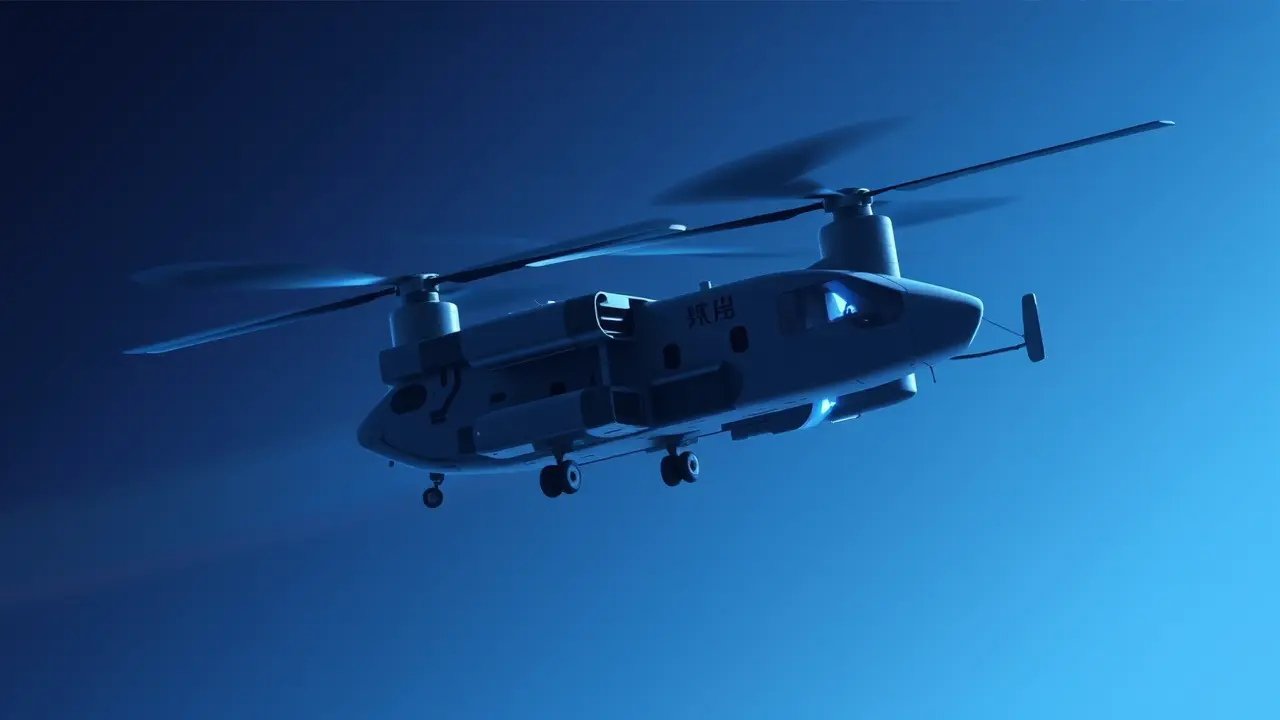
AIroboticsDrone Technology
China's Chinook-Style Heavy-Lift Drone Completes Maiden Flight
TH
Thomas Green
4 hours ago7 min read2 comments
In a development that feels ripped from the pages of a sci-fi novel yet is firmly grounded in terrestrial ambition, China's aerospace sector has marked a significant milestone with the inaugural flight of the Boying T1400, a heavy-lift unmanned helicopter that bears a striking, purposeful resemblance to the American workhorse, the Boeing CH-47 Chinook. Developed by the private firm United Aircraft Technology, this tandem-rotor drone isn't just a piece of hardware; it's a key that unlocks some of the most forbidding environments on Earth, from the razor-edged, oxygen-starved peaks of the Himalayas—a region of ongoing strategic sensitivity—to the vast, contested blue of the South China Sea.The successful maiden voyage signals more than just technical prowess; it represents a fundamental shift in logistical calculus, echoing the kind of paradigm leap we see in Elon Musk's vision for Mars, but applied to our own planet's final frontiers. Imagine a future where high-altitude military outposts, previously reliant on treacherous ground convoys or expensive manned flights, receive their supplies via this autonomous, all-weather mule, operating with the relentless efficiency of a machine and the payload capacity that can change the game in remote infrastructure projects or disaster relief.The strategic implications are as vast as the operational range this drone promises. For decades, the Chinook has been the undisputed king of heavy-lift, its distinctive silhouette a symbol of American logistical dominance in conflicts from Vietnam to Afghanistan.The emergence of a Chinese counterpart, designed from the ground up as an unmanned system, is a clear statement of intent in the great power competition for technological supremacy, a race as consequential as the one for space in the 20th century. This isn't merely about catching up; it's about leapfrogging, using the flexibility of a private company and a focus on unmanned systems to create a platform potentially more versatile and risk-tolerant than its manned inspiration.We must consider the materials science that allows it to withstand extreme cold and corrosive salt spray, the advanced flight control algorithms that manage the complex aerodynamics of a tandem-rotor system without a human pilot, and the satellite-linked navigation that guides it over featureless ocean or mountainous terrain. The T1400 is a bundle of converging technologies—composite materials, artificial intelligence, and robust communications—all coming together to solve a problem as old as exploration itself: how to sustain presence in the most hostile places.While United Aircraft Technology touts its civilian applications, the shadow of its utility in bolstering China's position along its contentious borders and maritime claims is long and unmistakable. This drone could, in a single sortie, resupply a Himalayan outpost at 5,000 meters, deliver critical parts to an oil rig in turbulent seas, or serve as a platform for surveillance or electronic warfare, all while keeping human operators safely hundreds of miles away.It's a tangible step towards the automated battlefield and the automated frontier, a piece of a larger puzzle that includes everything from hypersonic missiles to lunar bases. The Boying T1400's first flight is a small event in itself, but its trajectory points toward a future where the skies of the world's most contested regions will be increasingly filled with autonomous heavy-lifters, silently shifting the balance of power one payload at a time.
#featured
#China
#heavy-lift drone
#unmanned helicopter
#Boying T1400
#tandem-rotor
#test flight
#extreme conditions
Stay Informed. Act Smarter.
Get weekly highlights, major headlines, and expert insights — then put your knowledge to work in our live prediction markets.
Related News
© 2025 Outpoll Service LTD. All rights reserved.














